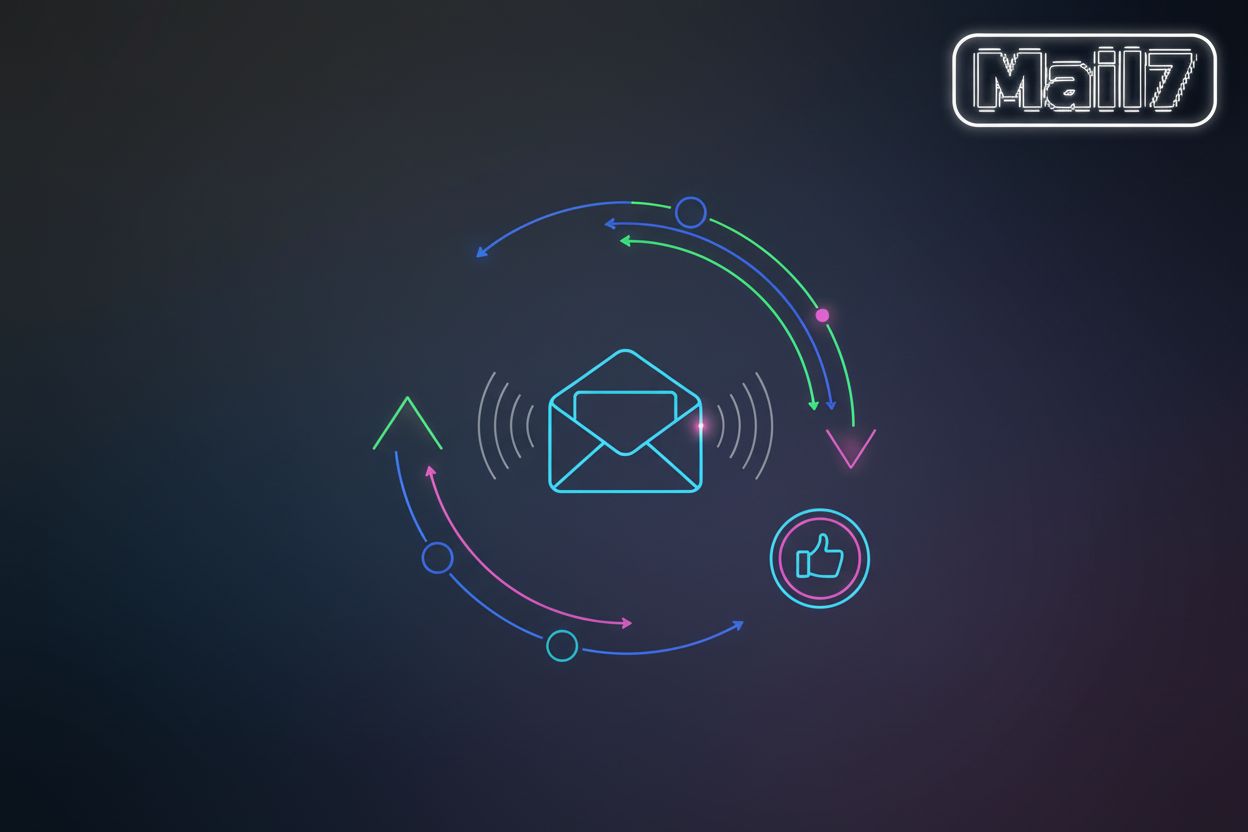Advanced Email Authentication Testing (DMARC, SPF, DKIM)
TL;DR
Understanding the Core: SPF, DKIM, and DMARC Refresher
Okay, so you wanna make sure your emails actually get delivered and not get lost in spam folders, right? It's a jungle out there, trust me.
Here's a quick rundown of what we're dealing with:
- spf (Sender Policy Framework): Think of it as a list of approved senders. It tells receiving servers which ip addresses are allowed to send emails on behalf of your domain. Kinda like a bouncer checking IDs.
- dkim (DomainKeys Identified Mail): This uses cryptographic signatures to verify the email's integrity. It proves that the email wasn't tampered with during transit.
- dmarc (Domain-based Message Authentication, Reporting & Conformance): DMARC builds upon spf and dkim, telling receiving servers what to do with emails that fail authentication. You can set policies to "none", "quarantine", or "reject."
Let's break down each of these a bit more, starting with spf and how it keeps the bad guys out.
SPF: The Sender's Stamp of Approval
spf is all about telling the world which mail servers are allowed to send email from your domain. When a receiving server gets an email, it checks the spf record for the sender's domain. If the sending server's ip address is on that list, great! If not, it's a red flag.
How it works (the basics): You publish a TXT record in your domain's dns. This record lists the ip addresses or hostnames that are authorized to send mail for your domain.
Example: v=spf1 ip4:192.168.1.1 include:mail.example.com ~all
This says: "Emails from this domain are okay if they come from ip 192.168.1.1 or from servers listed in mail.example.com's spf record. Anything else is questionable (~all)."
DKIM: The Digital Signature
dkim adds a layer of trust by digitally signing your emails. It's like putting a tamper-evident seal on your package. When an email is sent, your server generates a signature using a private key. The receiving server can then use your public key (published in your dns) to verify that the signature is valid and that the email hasn't been altered since it was sent.
How it works (the basics): You generate a pair of keys (public and private). The private key stays on your sending server, and the public key is published as a TXT record in your dns. When you send an email, your server signs a part of the email's header with the private key. The receiving server looks up your public key and verifies the signature.
Example DNS Record: selector._domainkey.yourdomain.com IN TXT "v=DKIM1; k=rsa; p=MIIBIjANBgkqhkiG9w0BAQEFAAOCAQ8AMIIBCgK..."
DMARC: The Policy Enforcer
dmarc is the boss. It sits on top of spf and dkim and tells receiving servers what to do if an email fails spf or dkim checks, or if the domain in the "From" header doesn't align with the authenticated domain.
How it works (the basics): You publish a TXT record in your dns that specifies your policy.
Example: _dmarc.yourdomain.com IN TXT "v=DMARC1; p=quarantine; rua=mailto:[email protected]"
This tells receivers: "If an email fails DMARC checks, quarantine it (send it to spam). Also, send aggregate reports to [email protected]."
Setting Up a Testing Environment for Email Authentication
Alright, so you're ready to build your email authentication fortress? Good, cause' it's time to get our hands dirty and setup a testing environment.
- First up, you'll need a dedicated test domain. Don't mess with your production setup, okay? Think of it like a lab where you can blow stuff up without consequences.
- Next, configure your dns records for spf, dkim, and dmarc on that test domain. Subdomains are your friend here - use 'em for segmented testing; it helps keep things organized.
- SPF Records: These are TXT records. A basic SPF record might look like
v=spf1 include:_spf.google.com ~all. You'll need to adjust theincludeorip4mechanisms based on your sending services. - DKIM Records: These are also TXT records, but they have a specific format. You'll typically have a selector (e.g.,
default._domainkey) followed by the DKIM public key. Your email sending service will usually provide you with the exact record to publish. - DMARC Records: Another TXT record, usually starting with
_dmarc. A simple one might bev=DMARC1; p=none; rua=mailto:[email protected].
- SPF Records: These are TXT records. A basic SPF record might look like
- Then, get yourself some smtp testing tools. These let you mimic different sending infrastructures, so you can see how your authentication holds up under various conditions.
It's kinda like dress rehearsal, but for your emails.
Now, as powerdmarc's advanced email authentication course points out, understanding the complexities of these protocols is key to expert-level security, so be sure to check that out too.
Time to get real, in the next section we will talk about simulating real-world sending scenarios.
Advanced Testing Techniques
Think your email authentication is rock solid? Time to put that to the test with some advanced techniques. We're not just talking about basic setups here; we're diving deep.
First, let's talk dmarc policies. You gotta test what happens when emails fail authentication. Experiment with "none," "quarantine," and "reject" to see how they impact delivery.
Analyze those dmarc reports too, seriously. These reports, usually sent to an email address you specify in your dmarc record, are goldmines of information. They tell you which IPs are sending mail for your domain, whether they're passing or failing spf/dkim, and how receivers are treating those emails. You can use tools to parse these XML reports into more readable formats.
Adjusting those policies, it's an ongoing process, not a set it and forget it type situation.
spf records have this annoying limit, a 10-DNS lookup limit. This means your spf record can only reference other dns records (like
includemechanisms orarecords) up to 10 times. If it exceeds this, the spf record is considered invalid and often ignored by receiving servers, leaving your domain unprotected.Minimize those lookups! Streamline your spf record.
Consider spf flattening. This is a technique where you replace
includemechanisms that point to other spf records with the actual ip addresses or ranges from those records. It's like copying and pasting the contents of a linked document directly into your main one, reducing the need for extra lookups. It can be complex and requires careful management, but it's essential for large or complex sending infrastructures.dkim key rotation is crucial for security, like changing your passwords regularly. Regularly rotating your dkim private/public keys makes it harder for attackers who might have compromised an old key to forge emails.
Test the rotation process itself. Make sure the transition is smooth.
Validate those dkim signatures after the rotation. You don't want anything breaking.
Alright, that's the lowdown on advanced testing. Let's move on to automating some of this.
Automated Email Authentication Testing
Want to make sure your email authentication is up to snuff without manually checking everything? That's where automation comes in, and its pretty dang useful, let me tell ya.
- Integrating into CI/CD Pipelines: Automate the validation of spf, dkim, and dmarc records as part of your continuous integration and continuous delivery process. This ensures that any changes to your email infrastructure are automatically checked.
- api-Driven Checks: Use apis to programmatically check dns records. This allows you to quickly verify that your authentication settings are correct.
- Email Delivery Verification Scripts: Develop scripts that send test emails and then verify their successful delivery. Analyze email headers and authentication results automatically using email apis.
Disposable email services? They're great for generating temporary addresses for testing deliverability and spam filtering. Automating the creation and management of these addresses is key. You can often do this by using their apis if they offer them, or by scripting interactions with their web interfaces. Tools like Mailinator or services that offer programmatic access to temporary inboxes can be really helpful here.
Troubleshooting Common Issues
Alright, so you've been putting in the work setting up your email authentication, but what happens when things goes wrong? Turns out, somethings can and will break down.
- spf permerrors are a pain, often caused by syntax errors or exceeding the 10 dns lookup limit.
- Troubleshooting: Use an online spf checker to validate your syntax. If you're hitting the lookup limit, you'll need to simplify your record, perhaps by flattening it or consolidating
includestatements. Tools likedigcan help you count lookups:dig yourdomain.com TXT.
- Troubleshooting: Use an online spf checker to validate your syntax. If you're hitting the lookup limit, you'll need to simplify your record, perhaps by flattening it or consolidating
- dkim signature failures might be due to key mismatches or dns propagation issues.
- Troubleshooting: Double-check that the public key published in your dns exactly matches the private key used by your sending server. Ensure your dkim selector is correct. Use
dig yourselector._domainkey.yourdomain.com TXTto verify the published key. Also, remember that dns changes can take time to propagate.
- Troubleshooting: Double-check that the public key published in your dns exactly matches the private key used by your sending server. Ensure your dkim selector is correct. Use
- dmarc failures usually stem from spf and dkim alignment problems.
- Troubleshooting: DMARC reports are your friend here; they'll pinpoint where things are falling apart. Check the spf and dkim results within the reports. If spf is failing, check your spf record. If dkim is failing, check your dkim setup. Alignment issues mean the domain in the
From:header doesn't match the domain authenticated by spf or dkim.
- Troubleshooting: DMARC reports are your friend here; they'll pinpoint where things are falling apart. Check the spf and dkim results within the reports. If spf is failing, check your spf record. If dkim is failing, check your dkim setup. Alignment issues mean the domain in the
Basically - keep at it, and you'll get there.





